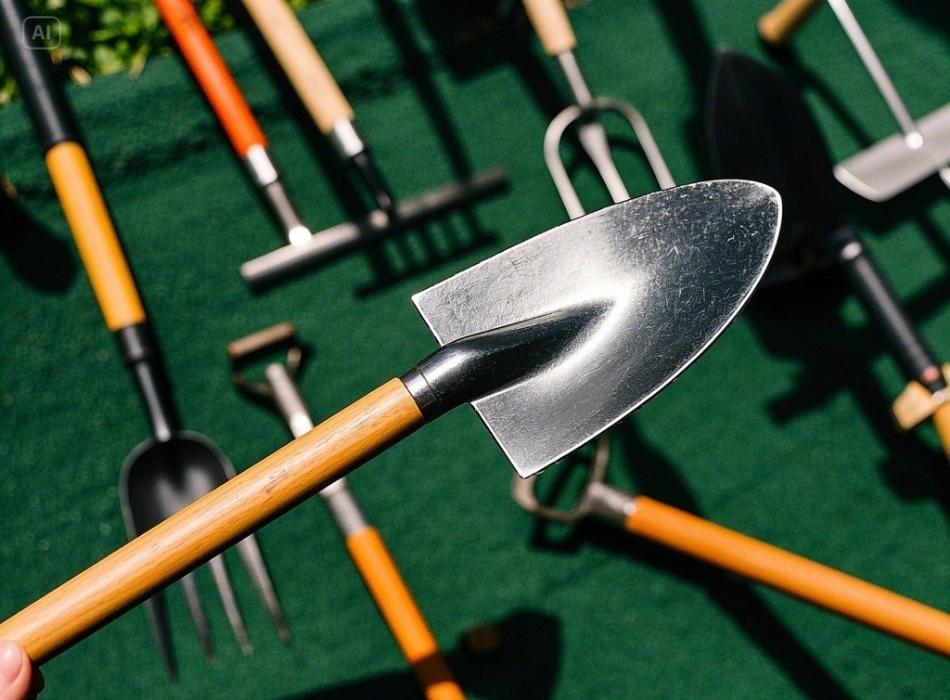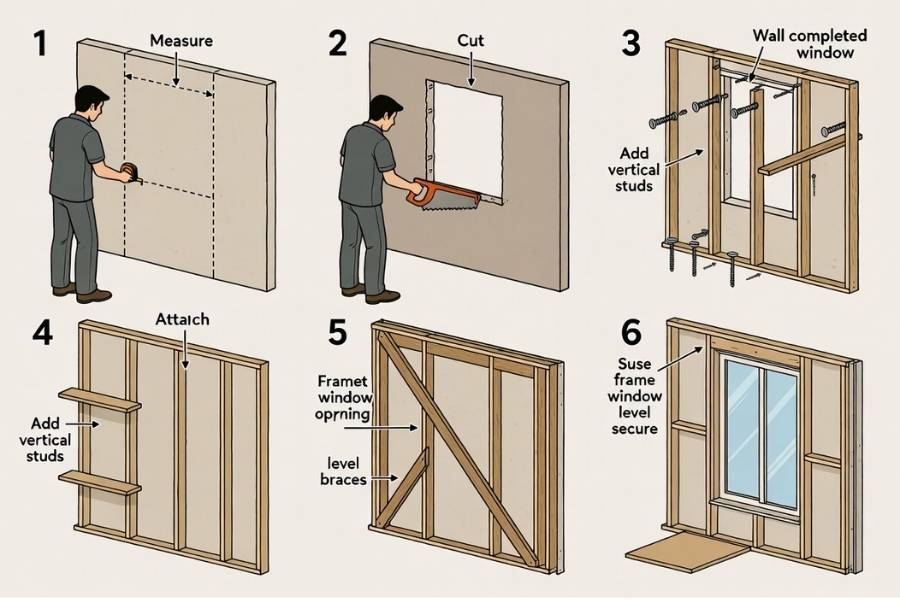Keeping your garden in top shape requires the right tools, and one of the most essential tools is the garden hoe. Whether you’re a seasoned gardener, a professional landscaper, or a homeowner dabbling in backyard gardening, understanding how to choose and use the right garden hoe can make your work more effective and enjoyable.
This guide will cover everything you need to know about garden hoes, from their different types and uses to tips for choosing the perfect one for your needs. Let’s get started!
Why Every Gardener Needs a Garden Hoe
The garden hoe is one of the oldest agricultural tools, with roots tracing back thousands of years. But its functionality has stood the test of time. A well-designed home is a multitasking tool for cultivating soil, weeding, shaping garden beds, and much more. It speeds up tasks that would otherwise require hours of manual effort, making it a must-have for anyone who works with plants.
If you’re not quite convinced, here’s why a garden hoe is indispensable:
- Efficiency: It allows for precise soil preparation and weed removal.
- Ease of Use: A hoe is designed to reduce Strain on your back and hands, making it ergonomic.
- Versatility: Hoes come in different styles and shapes to suit a variety of gardening tasks, from digging furrows to weeding.
- Cost-effective: A garden hoe is a one-time investment that lasts for years. It’s much more cost-efficient than purchasing new tools every season.
In addition to these benefits, different types of hoes are available in the market. Here are some common ones and their uses:
- Dutch or Push Hoe: This type has a sharp blade that cuts weeds below the soil surface. It’s perfect for shallow cultivation and removing annual weeds.
- Warren Hoe: With a triangular shape and pointed end, this Hoe is ideal for digging trenches and creating furrows for planting seeds.
Not all homes are created equal, which brings us to the next section!
Types of Garden Hoes and Their Uses
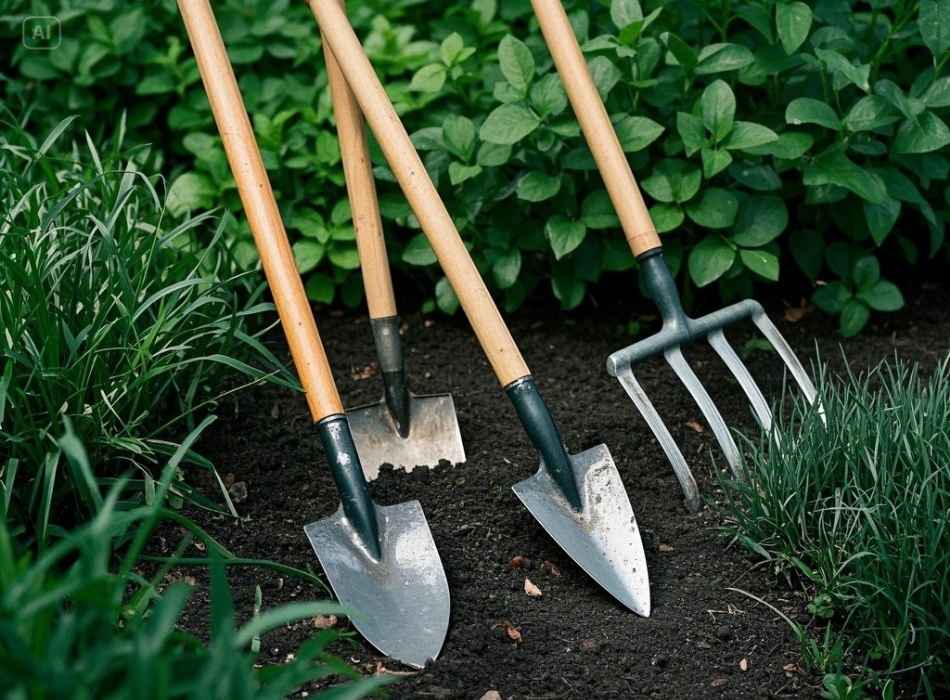
Several types of hoes exist, each designed for specific tasks. Understanding these variations can help you choose the right one for your garden.
1. Draw Hoe
When you think of a garden hoe, the classic draw hoe is likely what comes to mind. It has a flat, rectangular blade set at a right angle to the handle and is used primarily for digging, shaping soil, and pulling up weeds.
- It is best to break tough soil, create planting trenches, and form raised beds.
- Pro Tip: Use short, controlled strokes for maximum soil penetration.
2. Dutch Hoe
The Dutch Hoe has a flat, sharp blade set at an angle to the handle. This allows gardeners to push and pull the Hoe just beneath the soil’s surface. Its design makes it excellent for slicing through weeds.
- Best for: Surface weeding in vegetable or flower gardens.
- Pro Tip: Keep the blade sharp for cleaner weed removal.
3. Scuffle Hoe (Stirrup Hoe)
Named for its stirrup-shaped blade, the scuffle hoe is lightweight and designed to weed soil with a push-pull motion.
- Best for: Clearing large areas of small weeds quickly.
- Pro Tip: Maintain a consistent rhythm to avoid disturbing the root structure of nearby plants.
4. Warren Hoe
This Hoe has a triangular blade that comes to a point, making it ideal for precision tasks.
- Best for: Digging planting holes and creating furrows.
- Pro Tip: Opt for a warren hoe if you work in tight spaces or raised garden beds.
5. Collinear Hoe
With a long, thin blade, the collinear Hoe is designed for cutting weeds close to the surface without disturbing soil.
- Best for: Precision weeding in garden rows or flower beds.
- Pro Tip: Great for gardeners who practice no-till methods.
6. Onion Hoe
Smaller and more lightweight than most, the onion hoe is ideal for delicate or detailed work in confined spaces.
- Best for: Working around delicate plants like herbs or vegetables.
- Pro Tip: Perfect for raised beds with tightly arranged crops.
By understanding the strengths of each type of garden hoe, you can select the tool that fits your garden’s unique needs. Many gardeners have a combination of hoes in their tool shed, using different types for various tasks throughout the season. Experiment with different hoes to find the ones that work best for you and your gardening style.
- Additional Uses: Apart from weeding, some other common uses of garden hoes include creating furrows for planting seeds, loosening compacted soil, and making shallow trenches for irrigation or drainage. So don’t be afraid to get creative with your home and discover new ways to make it an essential tool in your gardening arsenal!
- Maintenance Tips: Regularly sharpen its blade using a metal file or sharpening stone to ensure your garden hoe stays sharp and effective. You should also clean off any dirt or debris after each use to prevent rust and prolong the life of your Hoe. Additionally, storing it in a dry place and applying a light coat of oil can help prevent rust and keep it in good condition.
- Eco-Friendly Option: Consider investing in a wooden garden hoe to reduce environmental impact and use a more sustainable gardening tool. Unlike metal hoes that require manufacturing resources, wooden hoes are made from renewable materials that can be replenished naturally.
- Personalized Touch: Make your garden hoe unique by decorating its handle with paint or adding decorative elements such as beads or ribbons. This will make it stand out in your garden and help you easily identify your Hoe among other gardening tools.
- Great Exercise: Using a garden hoe requires you to use your entire body, making it a great form of exercise. Using proper technique and maintaining good posture, you can strengthen your arms, legs, and core muscles while tending to your garden.
- Versatility: A garden hoe may seem like a simple tool with limited uses, but has many functions. In addition to weeding and digging soil, it can also create furrows for planting seeds or draw lines for straight rows.
How to Choose the Perfect Garden Hoe
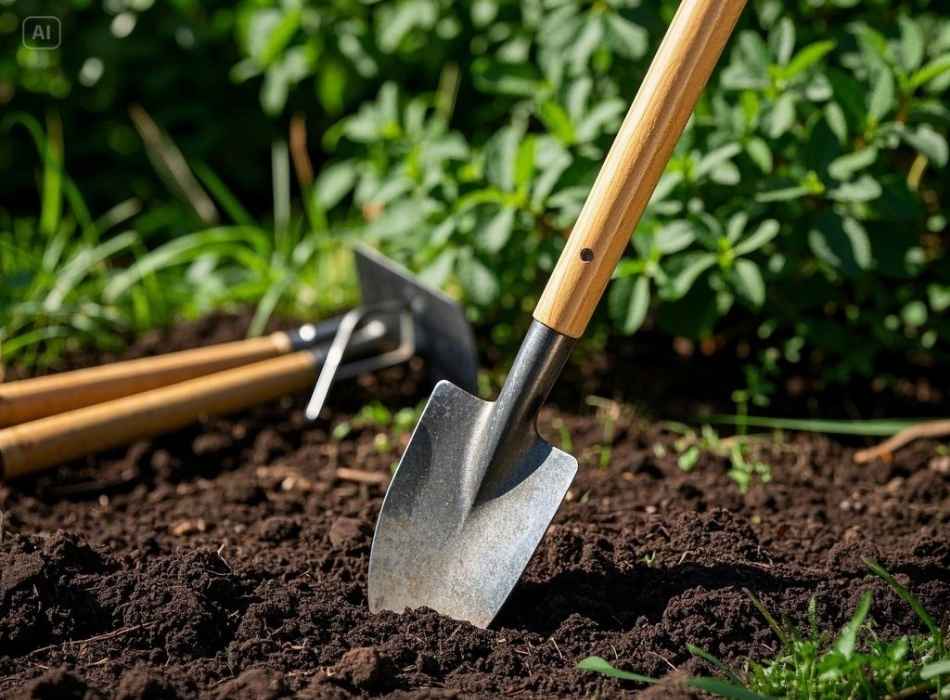
Buying a garden hoe is an investment in your garden’s success. Here’s what to consider when making your selection:
A. Blade Type and Material
Look for durable materials like stainless or tempered steel, which resist rust and maintain sharpness. The blade shape should also align with your gardening needs (e.g., rectangular for digging or triangular for precision).
B. Handle Material
Handles are made of various materials, such as wood, fiberglass, or metal. Wooden handles are lightweight and natural, while fiberglass or metal handles are more durable. When deciding, consider comfort and weight.
C. Length of the Handle
The handle length plays a significant role in ergonomics. Short handles provide more control but require bending, while long handles reduce back Strain but may lack precision. Choose one based on your working preferences and garden size.
D. Weight and Balance
A home should feel well-balanced in your hands. While a lightweight hoe is easier to use for extended periods, it should still be sturdy enough to handle challenging tasks.
E. Versatility
Some hoes are more versatile than others. If you have a sprawling garden with diverse crops, look for a multipurpose hoe. If you maintain specific beds, a specialized hoe may work best.
F. Budget
Hoes range from budget-friendly to premium models. Set a budget, but remember that investing in a durable, high-quality home will save you money in the long run. Consider the warranty and overall value when making a decision.
G. Maintenance
Proper maintenance is crucial to keeping your Hoe in good working condition. Regularly clean off dirt and debris, sharpen the blade when needed, and store it in a dry place to prevent rusting.
H. Ergonomics
Consider the design of the Hoe’s handle for optimal comfort during use. Look for an ergonomic grip or a long handle to reduce Strain on your body.
Personal preference
Ultimately, the best Hoe for you depends on your preferences and gardening needs. Consider all factors before making a purchase, and don’t be afraid to try out different types until you find the perfect fit. Remember, a well-cared-for Hoe can last for many gardening seasons to come. Happy hoeing! So, choosing one that feels comfortable and efficient for your gardening tasks is essential. Some people prefer a lightweight hoe for easy maneuverability, while others prefer a heavier-duty model for more challenging digging jobs. Additionally, consider the length and width of the blade and handle – longer handles are better for more extensive gardens, while smaller blades may be more suitable for tight spaces.
Tips for Using and Maintaining Your Garden Hoe
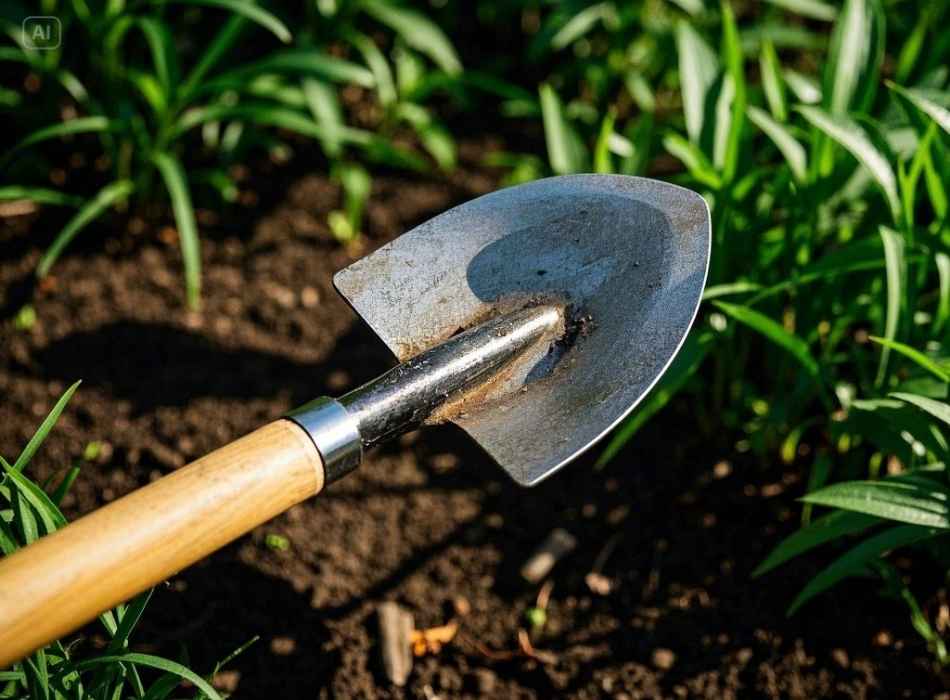
To make the most of this tool, follow these valuable tips:
1. Sharpen Your Hoe Regularly
Sharp hoes work more efficiently, just like sharp kitchen knives. To keep the edges sharp, use a whetstone or a file.
2. Hold Properly to Avoid Strain
Grip the tool near the middle of the handle and make smooth, rhythmic motions. This helps reduce fatigue during extended use.
3. Clean After Each Use
Remove soil and debris from the blade to prevent rust and maintain performance.
4. Use the Right Home for the Job
Each task calls for a specific type of Hoe. Use a draw hoe for soil preparation and a collinear hoe for precision weeding.
5. Store Properly
Keep your Hoe in a dry, covered space to prolong its lifespan. Hang it on a wall or keep it upright to prevent blade dullness.
The Joy of Gardening with the Right Tools
Selecting the right garden hoe can make all the difference in your gardening success. The perfect Hoe helps you work smarter—not harder—and results in a thriving, well-maintained garden.
Whether you’re removing weeds effortlessly with a Dutch hoe or precisely digging furrows with a warren hoe, a quality gardening hoe is an invaluable tool for every gardener, landscaper, and homeowner.
Happy gardening! Now, grab your favorite Hoe and get started on your next project!







